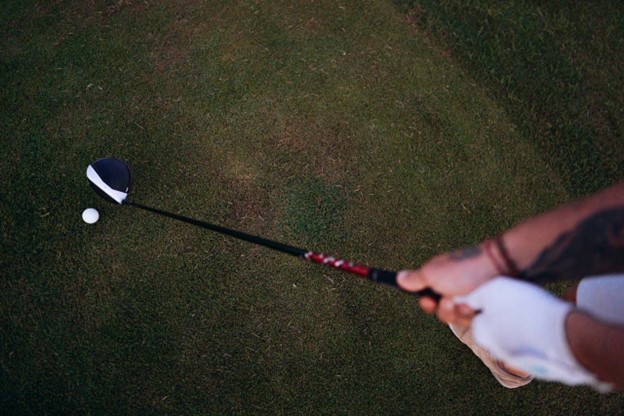Unlocking Your Golf Potential: Exploring the Dynamics of Drawing and Fading Shots

Golf isn’t just about hitting the ball hard; it’s like chess on grass. One of the coolest tricks you can learn is making the ball curve in the air. This can be super helpful for getting around obstacles, like trees, or hitting the ball closer to the hole when the wind is acting up. There are two main ways to curve the ball: drawing and fading. Let’s dive into what these mean and why they’re game changers.
What Are Drawing and Fading Shots?
Imagine you’re playing golf right-handed. If you hit the ball and it curves to the left, that’s called a “draw.” If it curves to the right, that’s a “fade.” Being good at these shots can make a big difference in your game. It’s like having a secret weapon to avoid problems on the course and get better scores.
The Basics of Curving the Ball
To make the ball curve, you need to spin it a certain way when you hit it. For a draw (ball curves left), you make the ball spin from right to left. For a fade (ball curves right), it’s the opposite. How do you do that? It depends on how you swing the club and how the club hits the ball. For a draw, you’ll want the club to close a bit as it hits the ball. For a fade, the club should be a bit open. Getting this right needs some practice, but once you’ve got it, you can navigate through tight spots much easier.
For golf enthusiasts looking to delve deeper into the strategic nuances of drawing versus fading shots, The Left Rough offers an in-depth exploration of golf’s most heated debate. This discussion can provide you with a broader understanding and appreciation for the art of curving the ball, enriching your tactical approach to the game.
Why Bother Shaping Your Shots?

Being able to curve your shots on purpose is super useful. For example, if the hole is around a corner to the left, hitting a draw can make the ball go further in that direction. If there’s trouble like water or sand on the left, hitting a fade can keep your ball safe. In windy conditions, curving the ball can help it stay on course better. Learning these shots gives you more options to play smarter, not harder.
How to Hit a Draw
To consistently hit a draw, you’ll need to tweak a few things:
- Grip: Hold the club tighter to help close the clubface when you hit the ball.
- Stance: Line up your feet, hips, and shoulders to the right of where you want the ball to go.
- Swing Path: Swing the club so it moves from the inside to the outside as you hit the ball.
Think of it like aiming to the right but swinging to the left. Pros say it’s crucial to visualize the shot in your mind and keep your movements smooth.
Mastering the Fade
For a fade, you do some things differently:
- Stance: This time, you line up to the left of your target.
- Grip: Hold the club a bit looser so the clubface stays open when you hit the ball.
- Swing Path: You’ll want to swing a bit from the outside to the inside.
Fading the ball is about finesse and control. You’re aiming to the left but gently curving the ball back to the right.
Common Mistakes to Avoid

A big oopsie is trying too hard to curve the ball and ending up with a wild hook or slice. This often happens if you grip the club too tight or your body isn’t lined up right. Using tools like alignment sticks can help you practice getting your body and swing just right to avoid these mistakes.
In the next part, we’ll discuss the right gear, practice drills, and advanced tips and wrap it up. Remember, mastering these shots is about patience, practice, and a bit of experimentation to see what works best for you.
Picking the Right Tools for the Job
Just like a painter needs the right brush, a golfer needs the right clubs. Some clubs are like magic wands for curving the ball. They have special features like adjustable weights that can help you control how much and in which direction the ball curves. Also, the flexibility of the club (called “shaft flex”) and the shape of the club head can affect your shot. It’s a good idea to talk to a golf pro who can help you choose clubs that fit your style, almost like getting a custom-tailored suit for your golf game.
Practice Makes Perfect

Knowing what to do is one thing, but being able to do it consistently is another. There are some fun drills you can try to get better at shaping your shots:
- For drawing the ball, Try the “gate drill.” Place two clubs on the ground parallel, leading towards your target but angled to the right. This creates a “gate” that encourages you to swing in a way that will make the ball draw.
- For fading the ball: The “towel drill” involves hanging a towel off the left side of your club (for right-handers). This visual cue helps you swing in a way that encourages a fade without actually hitting the towel.
Regular practice with these drills, and maybe even getting feedback from a coach or using a video app, can speed up your improvement.
Learning from the Pros
There’s a lot we can learn from professional golfers. They often have to make incredibly precise shots under pressure and use various tricks to control the ball’s flight. Paying attention to how they curve the ball around obstacles or adjust for wind can give you ideas on how to apply these techniques in your game. Sometimes, they share their secrets in interviews or instructional videos, which can be gold mines of information.
Wrapping It Up
The ability to intentionally curve your golf shots with a draw or a fade is like having a Swiss Army knife in your golf bag. It opens up a new level of strategy and creativity on the course. The key points to remember are:
- Equipment: Ensure you have the right clubs for your style and goals.
- Practice: Use drills to improve your swing path and get comfortable with shaping shots.
- Learn: Watch and learn from those who have mastered these skills.
By focusing on these areas, experimenting, and practicing regularly, you’ll find yourself able to navigate courses with more confidence and strategy. Each shot shaped to perfection brings you closer to unlocking your full potential on the golf course. Remember, every golfer’s journey is unique, so embrace the learning process and enjoy the ride. Before you know it, drawing and fading won’t just be tricks up your sleeve—they’ll be essential parts of your golfing toolkit, leading to lower scores and more enjoyable rounds.




